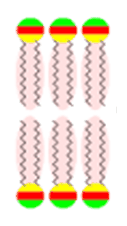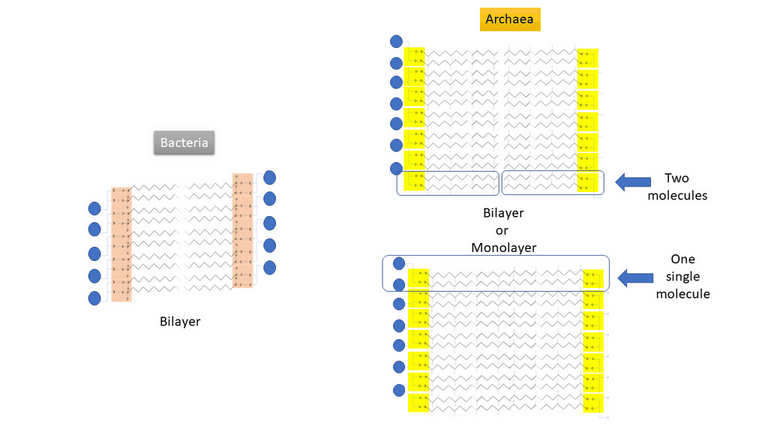Part 2 - neither bacteria nor eukaryotes
Archaea, really so different from other Domains?
Yes... and no. A caricature / simplified but not absurd way to describe archaea is to say that they are cells similar to bacteria (size, lack of true nucleus, with forms also encountered in bacteria with rods, bacilli,...) but having the characteristics of eukaryotic cells (for example, presence of histones to compact the chromosomal DNA, proteins of different types / RNA polymerases for transcription of DNA into RNA). In fact, it would be a pity to consider the archaea only as cells of bacterial appearance but being only "simplified" / "primitive" eukaryotic cells: Archaea have indeed their own characteristics, found nowhere else in the living. It is likely that if these different elements had been known chronologically before others (such as the absence of a "true" nucleus), there would have been no such grouping made with bacteria. Thus, to take only a few examples, the plasma membrane of archaea is remarkably different from other forms of life: the membranes of eukaryotic cells and bacteria are much more similar to each other than are those of archaea.
In the presence of a larger number of phospholipid molecules, a double layer is formed. This allows the "rejecting" of water molecules on both sides of the hydrophilic heads, so warranting a lack of water at around (hydrophobic) tails: thus are created 2 aqueous spaces on both sides, delimited by this double layer of phospholipids: if a "loop" is formed, it will create two aquaeous spaces, one internal, the other external: thus forming a liposome or .... "a ghost of a cell / a primitive semblance of a cell"




